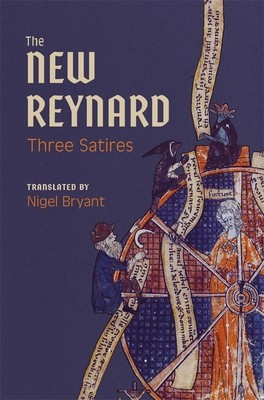
- We will send in 10–14 business days.
- Publisher: Boydell Press
- ISBN-10: 1783277386
- ISBN-13: 9781783277384
- Format: 15.6 x 23.4 x 1.4 cm, hardcover
- Language: English
- SAVE -10% with code: EXTRA
The New Reynard (e-book) (used book) | bookbook.eu
Reviews
Description
A translation of three works from the second half of the 13th century: Rutebeuf's Renart le Bestourné, the anonymous Le Couronnement de Renart and Jacquemart Gielée's Renart le Nouvel. These savage and highly entertaining satires are in a league of their own, and Renart le Nouvel contains important music which is reproduced in the text.
Rarely can a medieval work have resonated with the mood of the present as uncannily as do these three satires. Acerbic, raging and finally apocalyptic, these poems from the second half of the thirteenth century, richly entertaining and wickedly comic though they are, express a vision of the world and its descent into corruption and disaster which mirrors our own state of rampant alarm.The animal tales of the 12th- and 13th-century Roman de Renart - the Romance of Reynard the Fox - were immensely popular. Any satire in those original tales was generally light of touch, but the characters created in them, fox and wolf and ass and lion to name but four, were an open invitation to anyone of a more scathing satirical bent. The poet Rutebeuf, in his short but startling Renart le Bestourné ('Reynard Transformed'), deploys the beasts to make a venomous attack on the mendicant orders and on 'Saint' Louis IX of France. The anonymous Le Couronnement de Renart ('Reynard Crowned') then has the Fox crowned king, establishing a reign of every vice. And most ambitiously of all, Jacquemart Gielée in his Renart le Nouvel ('The New Reynard'), gripped by an increasingly pervasive sense of apocalypse, ends his poem with the Fox, the epitome of deceit and lying, not merely crowned king, but seated in permanent, malign control of the world atop a chocked, unturning Fortune's Wheel.
The New Reynard is of special interest not only to students of medieval literature but also to musicologists. Music, in the form of numerous songs, plays an important part in Renart le Nouvel's satirical and apocalyptic message, and the poem is renowned as the most abundant source of late medieval refrains. The notations have survived, and the music is edited in this volume by Matthew P. Thomson.
EXTRA 10 % discount with code: EXTRA
The promotion ends in 17d.23:30:14
The discount code is valid when purchasing from 10 €. Discounts do not stack.
- Publisher: Boydell Press
- ISBN-10: 1783277386
- ISBN-13: 9781783277384
- Format: 15.6 x 23.4 x 1.4 cm, hardcover
- Language: English English
A translation of three works from the second half of the 13th century: Rutebeuf's Renart le Bestourné, the anonymous Le Couronnement de Renart and Jacquemart Gielée's Renart le Nouvel. These savage and highly entertaining satires are in a league of their own, and Renart le Nouvel contains important music which is reproduced in the text.
Rarely can a medieval work have resonated with the mood of the present as uncannily as do these three satires. Acerbic, raging and finally apocalyptic, these poems from the second half of the thirteenth century, richly entertaining and wickedly comic though they are, express a vision of the world and its descent into corruption and disaster which mirrors our own state of rampant alarm.The animal tales of the 12th- and 13th-century Roman de Renart - the Romance of Reynard the Fox - were immensely popular. Any satire in those original tales was generally light of touch, but the characters created in them, fox and wolf and ass and lion to name but four, were an open invitation to anyone of a more scathing satirical bent. The poet Rutebeuf, in his short but startling Renart le Bestourné ('Reynard Transformed'), deploys the beasts to make a venomous attack on the mendicant orders and on 'Saint' Louis IX of France. The anonymous Le Couronnement de Renart ('Reynard Crowned') then has the Fox crowned king, establishing a reign of every vice. And most ambitiously of all, Jacquemart Gielée in his Renart le Nouvel ('The New Reynard'), gripped by an increasingly pervasive sense of apocalypse, ends his poem with the Fox, the epitome of deceit and lying, not merely crowned king, but seated in permanent, malign control of the world atop a chocked, unturning Fortune's Wheel.
The New Reynard is of special interest not only to students of medieval literature but also to musicologists. Music, in the form of numerous songs, plays an important part in Renart le Nouvel's satirical and apocalyptic message, and the poem is renowned as the most abundant source of late medieval refrains. The notations have survived, and the music is edited in this volume by Matthew P. Thomson.


Reviews